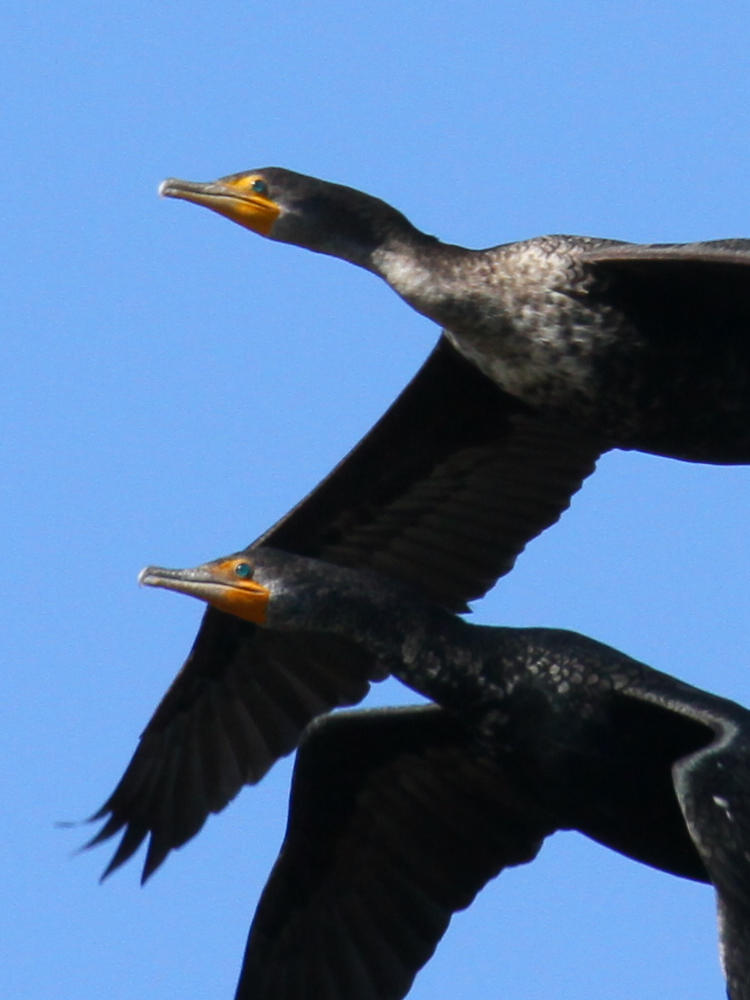That’s not how the line actually goes, but it services anyway. I’ve had these photos, and this subject, for nearly two weeks now, with nary a post in there, and just didn’t do a damn thing with them. Nor did Doc Brown show up to save me.
Now, there is a little backstory, but let’s start at the beginning. I went down to Jordan Lake while the temperature was nice just to see what I could find, and I was pleased to spot a bald eagle (Haliaeetus leucocephalus) cruising along in the stiff wind. Only I was still using manual focus from other tests, and hadn’t gotten it quite pinned down for those shots.

This is cropped tighter, so the original was much smaller in the frame – I’m not that bad at focusing. In case you’re wondering why it looks a little odd, the eagle has its head cocked to the right, either peering down at the waters below for fish, or wondering about the moon above – I can’t say for sure which.
But what this fostered was whether or not there was a focusing screen with better resolution, or indeed if the focusing screen in the Canon 7D was even interchangeable. So I started a little research, and determined that it was, and that someone even made a split-image microprism screen for it. I figured I’d try that out.
Split-image screens are the old method of precise focus, back before autofocus was even a thing, and I’d used them constantly on my Olympus bodies. When seen through the viewfinder eyepiece, in the center is a circle with a line through it, which are actually tiny lenses angled against one another, so lines that cut across the split circle would actually be offset if out of focus, and only line up properly when they were fully focused. Outside of that sits a microprism ring, which renders out-of-focus subjects into larger dots. Between the two, you can usually pin down precise focus.
As I determined once it arrived and I did another test run down to the lake, however, was that this was as bad as I remembered it. Using glasses as I do, it means that my eye sits a little further from the viewfinder than without, and also has a narrower ‘sweet spot.’ Split-image screens do not work well with what’s called a ‘high eyepoint,’ and having my eye even a little out of dead center meant one half of the split-image simply went black – I couldn’t even maintain this if I concentrated, because following a subject with the long lens was enough to shift the camera/eye combo out of alignment far enough. I quickly replaced the old focusing screen.
[Two quick notes in here, because the questions are kind of raised above. First, autofocus is not in the least affected by the focus screen, since it takes place through the reflex mirror, at least for DSLR cameras, and additionally, any viewfinder confirmation lights come through the mirror as well; changing the screen introduces no problems with these. Second, changing the focusing screen naturally varies from camera to camera, but for every example that I’ve found so far, it’s a trivial operation, taking a couple of minutes at best with simple tools. Always check for your particular camera first, but don’t be daunted by the idea of opening up the camera – it’s typically very simple.]

Nonetheless, autofocus was still performing as it had – which is to say, reasonably accurate, but still fooled on occasion (and in the case here, while I had exposure compensation dialed in for the bright lake surface, it should have been even higher.) I still have a couple of options for adjusting AF with the Tamron 150-600 lens – one in the camera, and one (at least) in the lens itself, performed with a little doodad called the Tap-In, which I possess but have not used yet. The idea was to hash out the various options that I had and come back to post the changes and results, but I haven’t done that yet. Partly because the temperatures dropped again and I simply didn’t feel like going out – that sounds wussy I know, and probably is, but my sinuses don’t cope with cold dry air too well and it feels like getting stabbed in the face, so I avoid this unless I’m really dedicated.
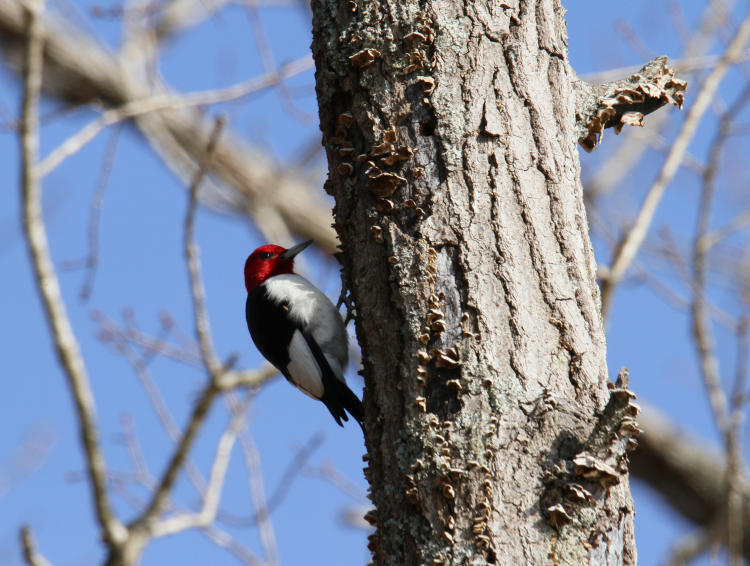
But there’s also the bare fact that, no matter what I do, there may be only minimal improvement, and this illustrates why. Most of my subjects occur at significant distances against cluttered backgrounds, and autofocus modes aren’t too specific. I’m usually using Canon’s ‘AI Servo’ mode, which is best to track moving subjects, but it also gets fooled by not holding the focus indicators bang-on with smaller subjects, very easy to do with the weight of the long lens – I simply twitch too much. If I shift even a hair away from perfectly centered in the focus point, the lens can try to ‘track’ the background clutter instead, and if this occurs when I’m trying to snag specific behaviors (like a diving osprey,) the AF can be off at the crucial moments – very annoying. And this says nothing about wanting to compose an image by not having the subject dead-center in the frame, so the key focus point – which is moveable – has to be set for that composition, and this isn’t instantaneous, usually requiring three to five button pushes to accomplish. All that said, refinements are still taking place.
But while out there for the first tests, I shot a few other subjects.

The waxing gibbous moon was almost overpowered by the brightness of the sky, but I went for a tighter crop here for drama, liking how the details faded into the blue. This is again manual focus, but much better on the mark this time.
I was also out checking on some progress, planning for the spring birthing season. Last year I’d realized that I inadvertently captured a nest in one frame, and had to pin down where it was and if it was possible to get closer. This is the one from last year:
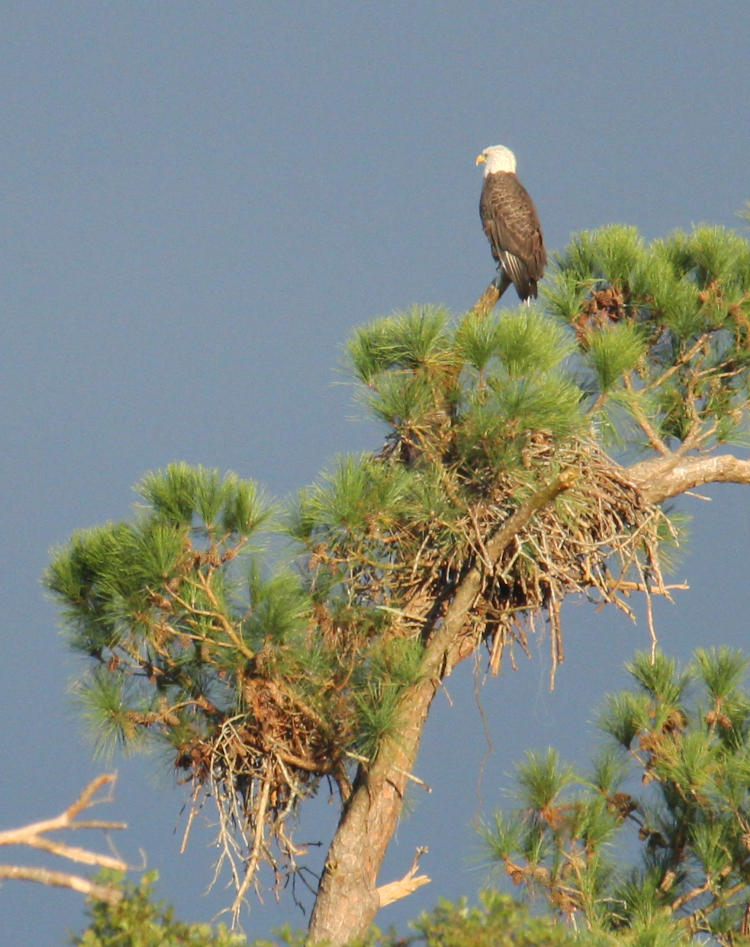
Followed by my views a couple weeks back, looking for activity while triangulating on its position:

Still there, and still in good shape, though no sign of occupancy or any work being done on it. I did determine that I could get much closer, having a decent view through an easy-to-reach gap in the trees, so here’s hoping that it gets occupied this year, by either an eagle or an osprey family.
I also went further down to check out the osprey nest that I’d been photographing last year:
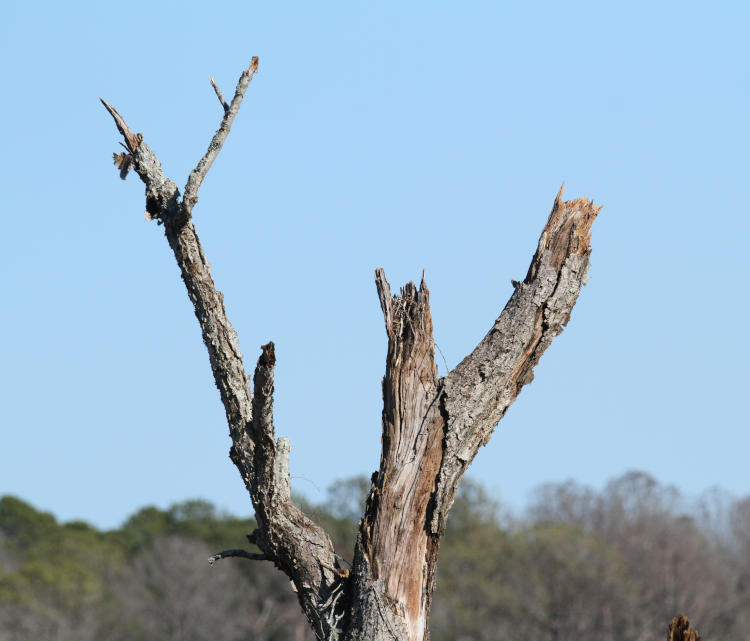
… and found it missing entirely. I wasn’t sure if something had collapsed, so once I got back I compared it to last year’s photos, such as this:
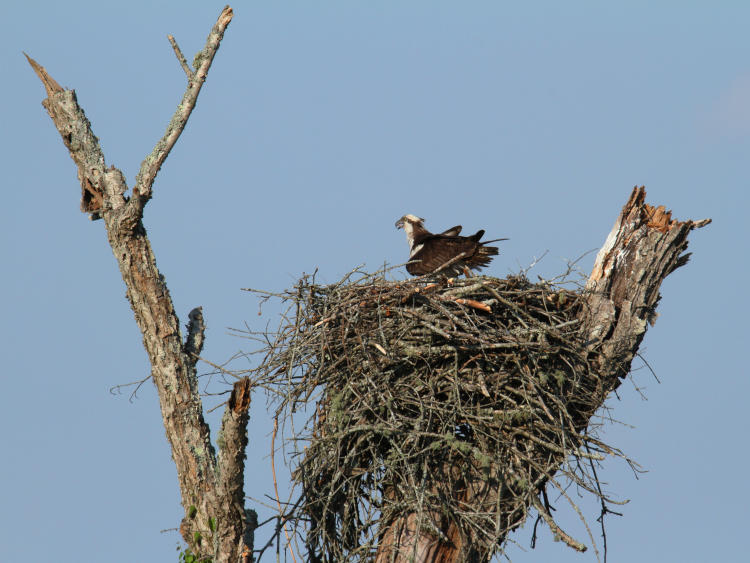
Actually, it doesn’t look different at all, save for the missing nest, but there was probably a fork out the back out of sight supporting the nest, and this may have broken off in the interim. Or the nest may simply have aged out and collapsed during a storm. It’s a shame though, at least from a photographer’s standpoint, since it had excellent visibility and access – about the only thing I could have asked for is being a little lower to allow a better view within. It remains to be seen if anyone will attempt to reconstruct a nest here, but I’m not holding my breath. I should get out and do more scouting as we enter nesting season, to try and find more sites to observe.
I’ll close with another version of the cormorants seen earlier, a tighter crop, because focus this time was quite sharp, and the green eyes can easily be made out even as they cruised past roughly fifty meters off. I’m good with it.
